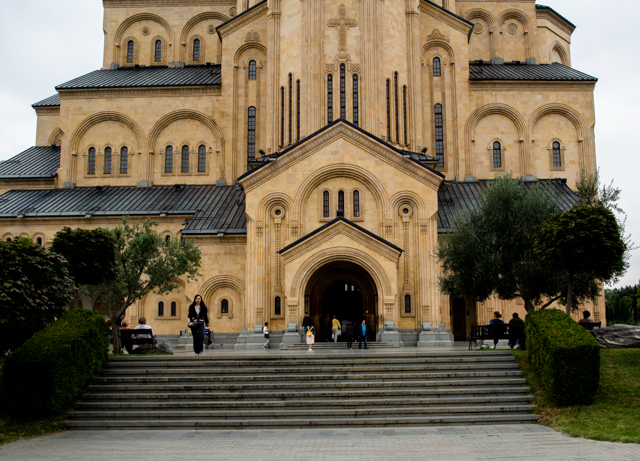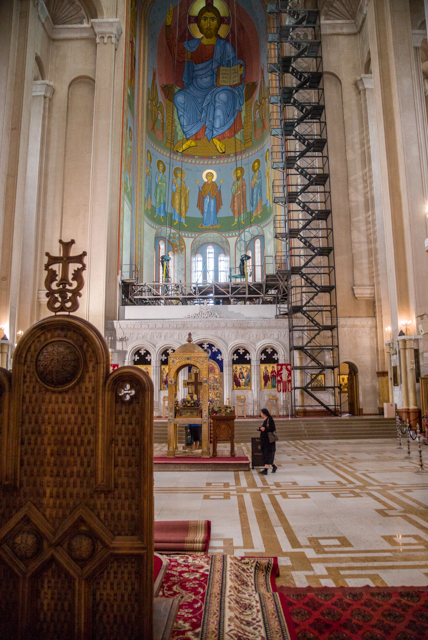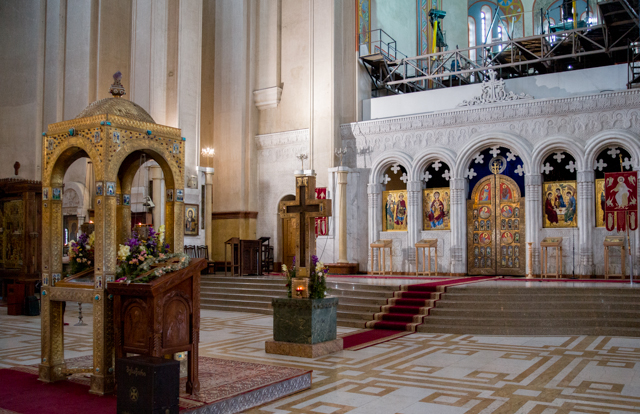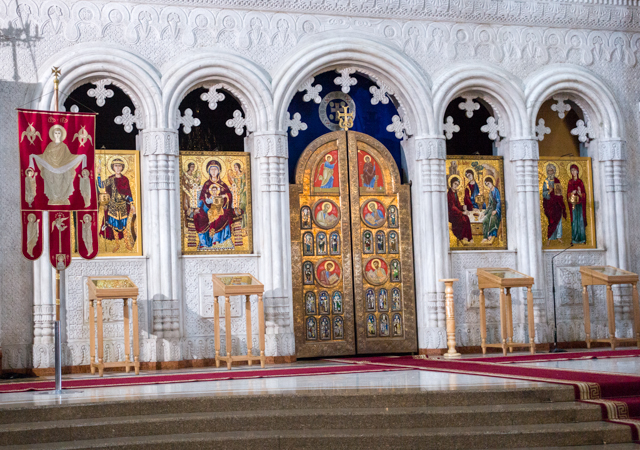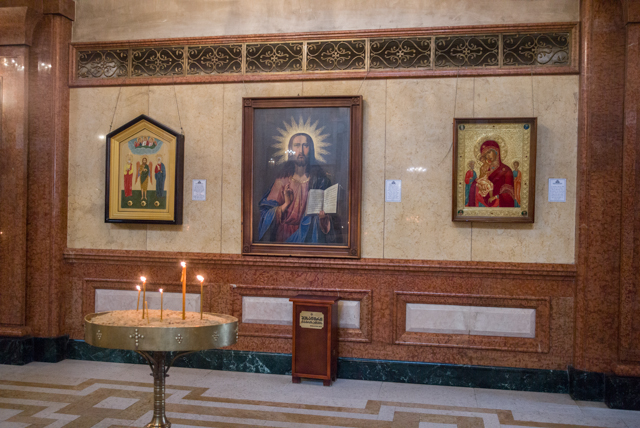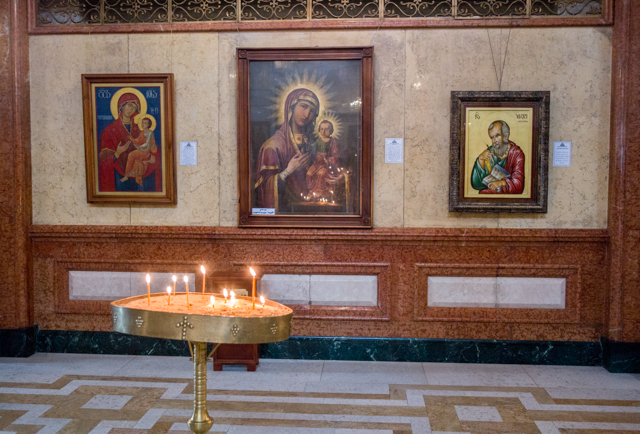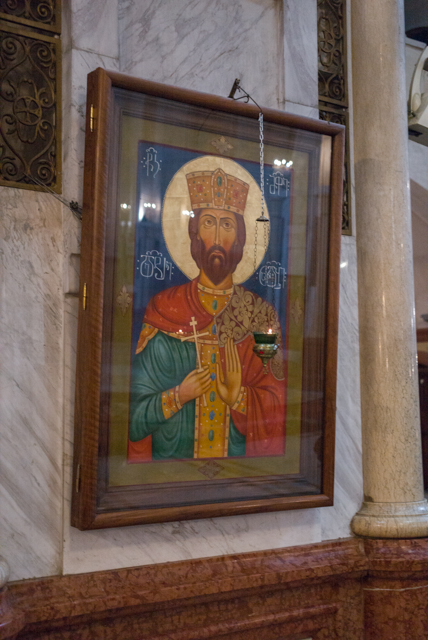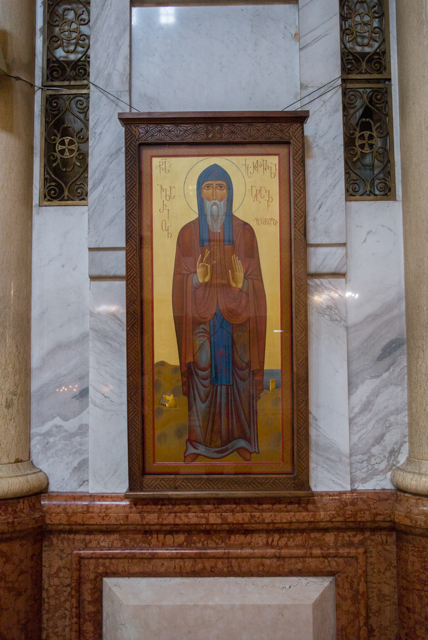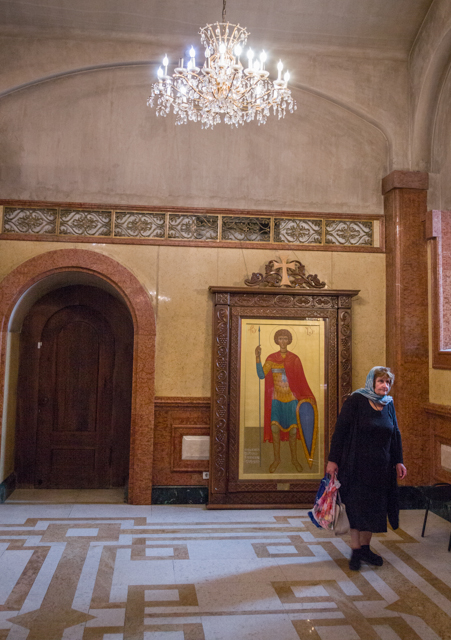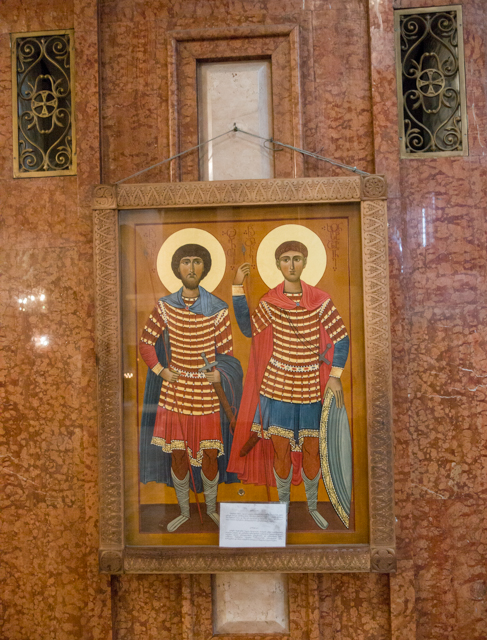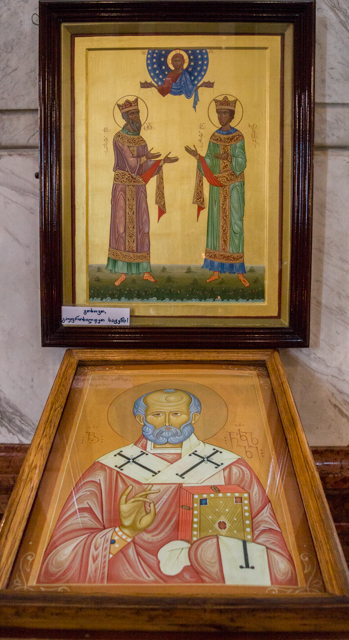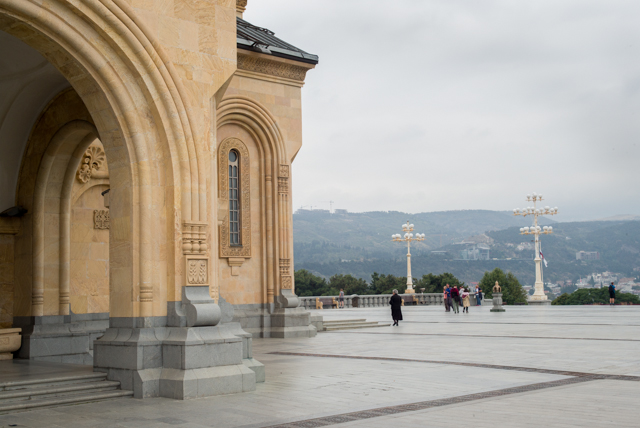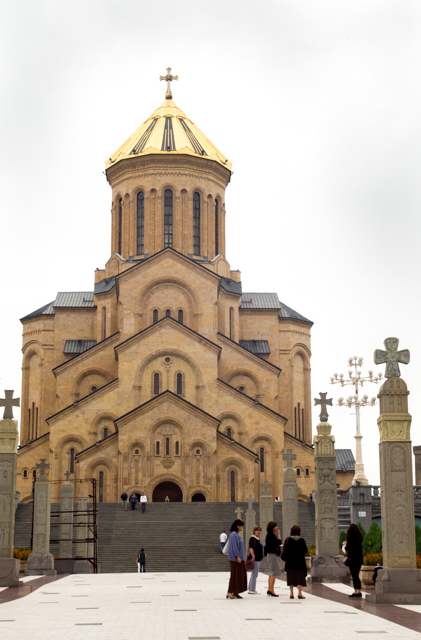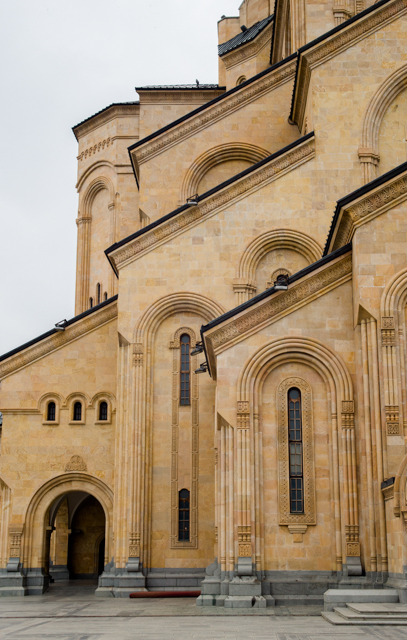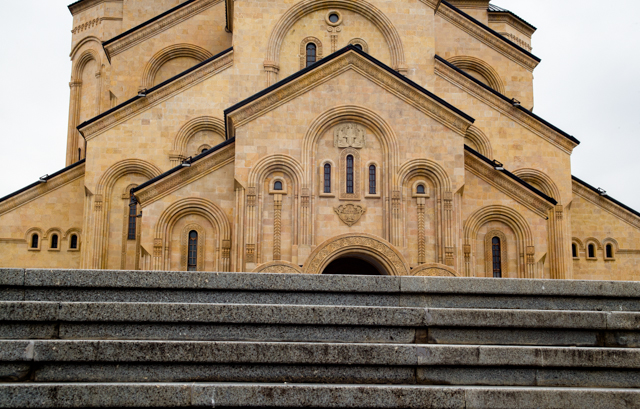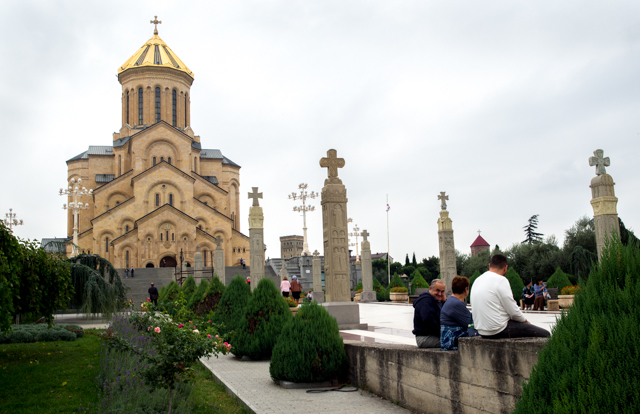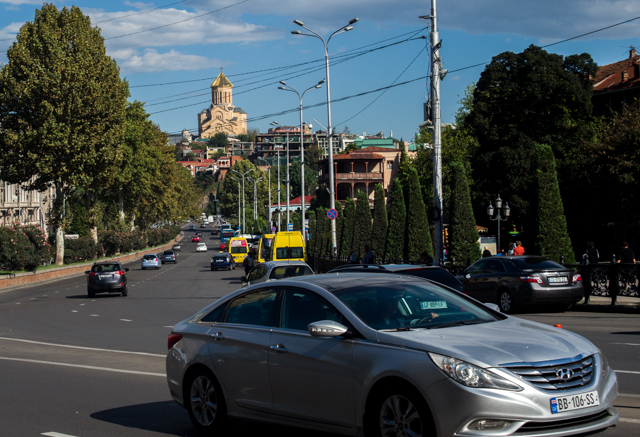The building grew in apparent size as we worked our way uphill and approached it. Rounding a final corner and finally seeing how enormous the building actually is came as a great surprise ... the sort of surprise that makes traveling worthwhile.
I do not spend time planning a trip, pouring over guide books or scouring the internet for information about the places I will visit and deciding which of the sites to see. I use a guide book on-site primarily for its orientational information about a place, for information about the public transportation network and how it works and for hints about language, food, culture and etiquette. Instead of detailed plans, I want to wander about a place attempting to learn about it first-hand and occasionally to experience marvelous surprises such as this one. So I did not know the name of this large church nor its history as we approached it, nor did I know its significance. This very large church is the Tsminda Sameba Cathedral, and its history provides a significant insight into human nature.
Russia annexed Georgia in 1800, and the Soviet Union maintained it as a satellite throughout nearly all of the 20th Century. In fact, Joseph Stalin was born in Gori, Georgia, and several other Soviet officials were also Georgian natives. Georgia gained its independence in 1991, as part of the dissolution of the Soviet Union. But then civil war plagued the new country until the Rose Revolution of 2003. With independence came a resurgence of religion in Georgia, just as religion rose in prominence in all the former Soviet Union's satellites. Thus the Tsminda Sameba Cathedral was planned beginning about 1994, and was funded mostly by individual donations. Construction was completed and the building was finally consecrated in 2004.
The resurgence of Georgian Othodox Christianity, along with all the national religions of the former Soviet satellites, seems a remarkable and important occurrence to me. After some 75 years of enforced official atheism, the people of these nations immediately and almost universally returned to their historical religious beliefs and practice when the empire dissolved. This makes a powerful point regarding the role of religion in human nature: there seems to be a very strong impulse in humans, stronger in some and weaker in others, to enthusiastically adopt some form of religious practice. The details of the practice are much less interesting than the fact that this impulse is shared among all humans, everywhere. This particular resurgence has occurred everywhere in the former Soviet Union, for examples, including Islam in Azerbaijan, Chechnya and Dagestan northeast of Georgia and Christianity elsewhere, including Russia itself. This shows that the religious impulse is is a predisposition that presumably constitutes one aspect or consequence of the eusocial character of the human species as presented by Edward O. Wilson in his recent writings.
Speculations regarding human nature aside, this building is a magnificent one, and the design is a lavish exhibition of traditional Georgian architecture. It is 84 meters (270 feet) tall, and the interior has five wide aisles with the central ones reaching up to the dome and its tall windows high above the floor.
